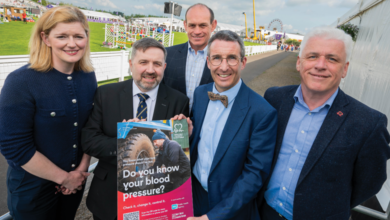Hospital hygiene
agendaNi looks at the recent health regulator’s report into hospital hygiene and finds while some trusts were praised, others were singled out for improvement.
Staff in hospitals across the province have been accused of having “gaps” in their knowledge of hygiene and infection prevention, according to a report published by the health regulator.
Published on 24 November, the report states that while some hospitals did have part or full compliance, others needed “considerable improvement”.
The inspections of eight major acute hospitals took place over the summer, from May to September. Marks were awarded across the board on eight counts: environment, linen, waste, sharps, patients equipment, hand hygiene, kitchen and clinical practice.
Belfast Trust
The Royal Victoria Hospital’s ward 4F received particular attention and got the minimum score for in the ‘clinical practice’ area – 74 per cent. That ward had to be closed for refurbishment soon after the inspection as it was recommended that it needed “immediate attention not only for the condition and cleanliness of the environment but also in relation to staff practice”.
Both it and the hospital’s A&E department recorded low scores for hand hygiene, though it must be noted that ‘low’ score is 74 and 73 per cent respectively.
That marker was set higher in the outpatients ward, along with 6E – another main ward in the hospital. The highest average score across all eight categories was 78 per cent, in the outpatients ward.
Musgrave Park, the report said, is “in a poor state of decor and repair”. The majority of recommendations, however, did not relate to that statement. In some cases the only problems resulted from poor use of storage space. There is no A&E facility in Musgrave and so only three areas were inspected.
While ward 5 is the oldest ward and its general state needed attention, the inspectors found that good compliance was evident in other areas.
Staff were highlighted for good practice in “maintaining optimal environmental hygiene and infection prevention”.
Orthopaedic ward 4 did not fare so well. The environment, linen and waste all bottomed out at 50 per cent, 58 per cent and 53 per cent respectively.
When the hospital received an action plan, the vast majority of changes were implemented over the following weekend.
The Royal’s children’s hospital received a worrying review. “Staff practices were of concern in all areas,” the report reads. Across the board low scores were awarded, indicating that significant improvement is required.
Northern Trust
Antrim Area Hospital recorded “high compliance” in most areas with the exception of waste and kitchen points, and inspectors were particularly impressed that ‘deep cleans’ were routinely carried out in the hospital.
Whiteabbey Hospital showed “good compliance” overall, particularly in ward 4, which recorded 100 per cent success in clinical practice.
The outpatients ward did need some repair work done as dust and debris were spotted in corners and cubicles. It also received a minimal score of 75 per cent in waste disposal.
By and large the regulator also found that the trust as a whole had adopted many of the recommendations made to it after the C. difficile outbreak in 2008.
Southern Trust
The review of South Tyrone Hospital showed that “good compliance”. Some of the older buildings were in need of repair and indeed a refurbishment programme is ongoing. The older of the wards inspected, ward A, remains in a good state while staff practice did need improvement.
South Eastern Trust
The overall findings from the Ulster Hospital were “a cause for concern” as only three areas were awarded a compliant score across the four areas assessed. The older areas of the hospital were in need of repair.
More attention to detail was needed in all areas of cleanliness and storage spaces were cluttered throughout the hospital. That mess, the report says, also restricted “optimal” cleaning in the assessed clinical areas.
The greatest shortcomings were staff’s hand hygiene and clinical practice. Clinical gloves were not used just once, IV lines had been left beside patients’ beds and a catheter bag was seen to be touching the floor.
There were still positives to come from the inspection such as a clean outpatients department. Since the inspection, the regulator has received an implementation plan from the trust.
Western Trust
Erne Hospital showed compliance in seven of the eight areas of inspection, with an 83 per cent rate for ‘environment’ just falling short.
Its A&E department has been refurbished but toilets in the building were not and were seen to be “outdated” and “worn”.
All areas achieved above 90 per cent in terms of hand hygiene. In general other areas which had problems could be sorted simply with a “more focussed approach”.
For the future
The report recommends that there should be a standardisation of practices across all trusts and hospitals, helped by sharing highlighted good practices. It also said that management walkabouts would help people at that level to have a better understanding of ward level maintenance.
As the report was published Health Minister Michael McGimpsey set up a team with the aim of improving cleanliness standards in hospitals.
He was encouraged by the performance of some trusts, specifically the Northern, but admitted: “I am gravely concerned by the poor performance in some trusts.”






